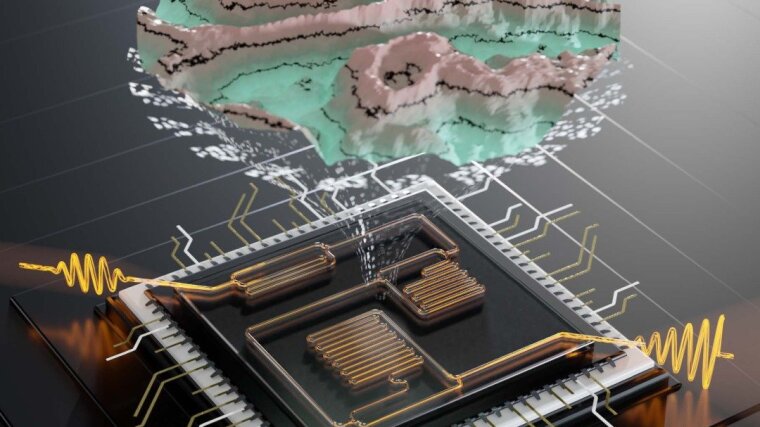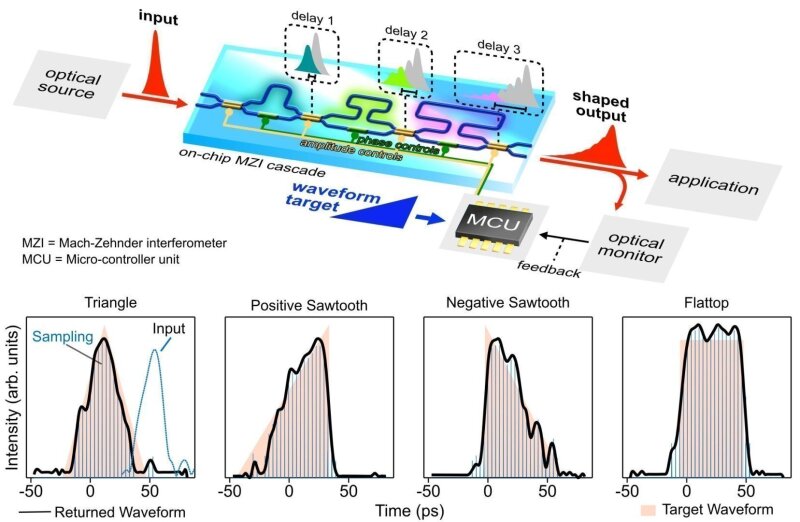
Prof. Mario CHEMNITZ
Image: Sven Döring, IPHTProf. Dr. Mario CHEMNITZ
Email: mario.chemnitz@leibniz-ipht.de
Phone: +49 3641-206-145
Prof. Mario Chemnitz is Chair for Intelligent Photonics System at the Institute of Applied Optics and Biophysics and leads the “Smart Photonics” Research Group at the Leibniz Institute of Photonic Technology (Leibniz IPHT). Both groups investigate the application potential of programmable optical devices in combination with machine learning algorithms and nonlinear photonics. The research focuses on a better understanding how to utilize complex wave dynamics in fibres and waveguides for unusual optical transformations, information encoding, and programmable processing. Building on this knowledge, the research group thrives for exploring new imaging and sensing solutions, new nonlinear states of light, and neuromorphic (brain-like) processor hardware. With this interdisciplinary approach at the interface of fundamental and applied MINT sciences, the research group contributes to the worldwide search for the next generation of energy-saving information processors for future medical diagnostics, telecommunications, and green computing.
Research areas
Dr. Chemnitz focuses on
- the development of programmable optical fibers and waveguide systems
- identification and utilization of new types of solitary states and phenomena emerging from strong non-local nonlinearities, mainly in liquid-core optical fibers
- understanding nonlinear optical processes as means to compute dense multi-dimensional optical information
- optical system interfacing and automization towards big-data measurements and information processing
- development of hyperspectral sources and integrated optics for ultrafast sensing and imaging
Teaching fields
- to be confirmed
Research Methods and Equipment
The optical laboratories run by Dr. Chemnitz offer a variety of programmable devices, fiber components, lasers, and optical diagnostics, mainly operating in the telecom wavelengths domain (i.e. Erbium C- and L-band, 1500-1600nm). All devices, commercial as well as custom made, are intended to be fiber-coupled offering a low entrance level for newcomers to optics. This includes:
- Arbitrary spectral amplitude and phase filters
- RF function generators and optical fiber modulators
- Femtosecond frequency comb sources and optical amplifiers
- Ultrashort pulse diagnostics, incl. autocorrelation, FROG, RF and optical spectrometers
Through close collaboration, the group has further access to chemical labs, fiber technology (e.g., fiber drawing tower, fusion splicers and tapering machines), as well as optical characterization techniques (e.g., commercial supercontinuum sources, ellipsometers, microscopes).
Recent Research Results
Harnessing the strengths of machine learning algorithms in combination with programmable optical and photonic devices hosts great scientific and technical potential. In a recent work, Dr. Chemnitz and co-workers demonstrated that existing photonic integrated circuits (PICs) can be repurposed to a large extent to new problems through machine learning in combination with problem-tailored diagnostics. The proposed scheme proves that marrying of optimization algorithms with off-theshelf telecommunication components and nonlinear optics enables the re-utilization of PICs beyond their initially designed usage. As such, photonic automation has the potential to aid the development cycle and re-utilize non-ideal PICs during R&D iterations. Dr. Chemnitz and his team continue to explore the multiple beneficial use cases of smart optimization for optical system design, control, and training.
Schematic setup and four possible outputs of an integrated interferometric wave shaper that autonomously adapts to a user-defined target waveform.
Image: Chemnitz research groupTowards this goal, the team also aims at developing programmable optical fibers for steering complex nonlinear interactions. This is enabled by exploiting the strong thermal sensitivity of specialty liquid-core fiber designs which has demonstrate by Dr. Chemnitz and co-workers in several works. The team has shown that the dispersive properties of well-designed liquid-core fibers can be used to control the emission wavelengths and strength of dispersive radiation from an optical soliton dynamically and locally. Dr. Chemnitz and his team exploit this concept to open fundamentally new ways to study optical soliton dynamics in a sandbox-type system, as well as to realize application-tailorable adaptive light sources and optical signal processors.
Principle of controlling dispersive wave generation through local thermal dispersion tuning.
Image: Chemnitz research group| [1] T. A. K. Lühder, et al., Adv. Sci. 9, 2103864 (2022). [2] R. Scheibinger, et al., Laser Photonics Review (in print) (2022). [3] B. Fischer, et al., Optica 8, 1268 (2021). [4] M. Chemnitz, et al., Optica 5, 695 (2018). [5] M. Chemnitz, et al., Nature Commun. 8, 42 (2017). |


